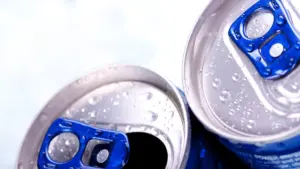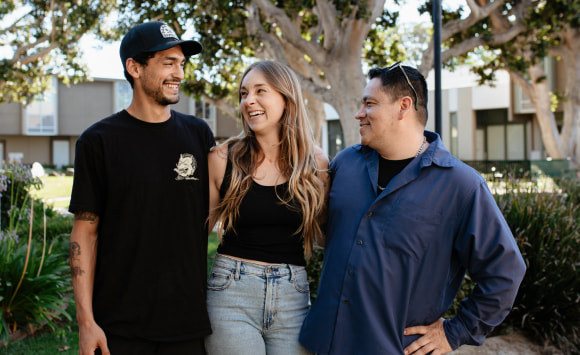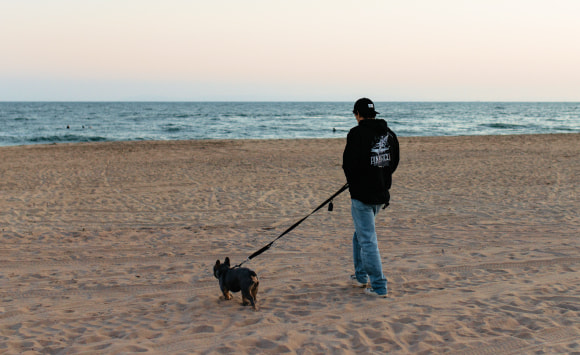California Sober is a recovery approach that’s gaining attention for its unique take on sobriety. Some people see it as a more flexible, harm-reduction path, especially for those who don’t feel connected to total abstinence models.
But what exactly does it mean to be California Sober, and what are its risks?

What Does “California Sober” Mean?
“California Sober” is a term that’s become more popular in recent years, especially since 2019, when it started gaining attention in the media. While it may sound like traditional sobriety, it means something different.
When someone says they are California sober, they usually mean they avoid alcohol and most drugs, but still use marijuana. Some people also include psychedelics like mushrooms in this lifestyle. So, even though they aren’t fully sober in the traditional sense, they believe this approach helps them stay away from more harmful substances.
Traditional sobriety usually means not using any mind-altering substances at all. This is often the path taken by people recovering from addiction. In medical terms, being sober means completely removing all intoxicating drugs or alcohol. So, calling this lifestyle “sober” can be confusing or even misleading, especially in recovery spaces.
Why Marijuana and Psychedelics Are Part of the California Sober Approach
Some people who follow the California Sober lifestyle believe that using marijuana or psychedelics can help them skip more toxic substances while still supporting their mental health or recovery goals.
1. Harm‑reduction and Substitution
Some people use cannabis to help them reduce or quit alcohol or other drugs. Research shows cannabis can relieve withdrawal symptoms (like anxiety, pain, or insomnia) and reduce cravings for harder substances such as opioids or alcohol.1 This is often called a drug substitution strategy.
One study of sober-living residents in California found that those who used cannabis reported fewer days of alcohol or drug use, suggesting cannabis might help some maintain recovery.2
2. Emerging Research Shows Promise
Psychedelics (like psilocybin, LSD, and MDMA) are being studied in controlled settings for their potential to help with addiction, PTSD, depression, and other mental health conditions.3
For instance, a review found that people who had used psychedelics were 27 % less likely to develop opioid dependence in one large survey. Other studies show LSD programs may reduce alcohol use, and psilocybin has helped cigarette smokers quit, even long-term.4
3. Experts Advise Caution
While cannabis doesn’t carry the overdose risks of opioids or alcohol, experts caution it can still lead to dependence, particularly in people with mental health issues or younger users.5
Psychedelics are generally not part of day-to-day California Sober practice. Instead, they’re sometimes used under clinical supervision to help with deep healing from trauma or substance use disorders, usually once or a few times, not regularly.
Is California Sober Safe for Everyone?
California Sober isn’t a one-size-fits-all solution. Without help from healthcare professionals, it can pose risks, especially for people facing addiction or mental health issues.
1. Cross-Addiction & Cannabis Use Disorder
- Many studies show that among cannabis users, 18–26% may develop Cannabis Use Disorder, with a 1-in-3 risk for those using weekly or daily.6
- Trying to substitute marijuana for harder substances can lead to swapping one addiction for another, known as cross-addiction.
2. Impaired Thinking & Poor Choices
- Cannabis can impair judgment, memory, and decision-making, especially with regular use.
- These impacts may lead to risky or impulsive behavior, undermining recovery goals.7
3. Mental Health Vulnerabilities
- Cannabis use is linked to a higher risk of psychosis, particularly in people with a genetic predisposition or family history. These are daily users who have up to four times higher risk.8
- It may also worsen depression, anxiety, mania, or PTSD symptoms.9
4. Health Problems from Regular Use
- Conditions like cannabinoid hyperemesis syndrome (CHS), which is severe vomiting after heavy cannabis use, are documented and dangerous.10
- Other physical risks include respiratory irritation, drug interactions, and cardiovascular concerns.
5. Lack of Support & Accountability
- Without clinical backup, self-managing substance use can undermine recovery. Traditional recovery programs emphasize complete abstinence, which many support groups consider essential.
- Peer recovery groups and addiction specialists often caution that California Sober creates a “gray area” that increases relapse risk with less accountability.
6. Psychedelics without Oversight Still Risky
- Though psychedelics like psilocybin or LSD don’t cause physical dependence, using them outside professional supervision can trigger severe anxiety, panic, paranoia, or persistent perceptual changes (HPPD).11
- Unsupervised use may worsen trauma or mental health issues.
California Sober might sound appealing, but without the structure and care of traditional recovery programs, it can backfire.
Should You Consider the California Sober Approach?
You should carefully think about your reasons, your personal history, and the risks involved before trying this approach.
You should be careful if:
- You’ve had issues with addiction in the past. Cannabis and psychedelics can still trigger cravings, relapse, or mental health struggles, especially for people in recovery.
- You have anxiety, depression, or other mental health problems. Weed and psychedelics can sometimes make these symptoms worse, not better, especially if you’re using them without medical guidance.
- You don’t have any professional support. Trying to manage recovery or life changes on your own can be detrimental. Self-directed recovery often misses warning signs like dependence or worsening mood.
Ask yourself:
- Am I using this approach to heal or to avoid healing?
- Am I being honest about why I want to keep using marijuana or psychedelics?
- Have I talked to a doctor, counselor, or support group?
- Could I stop if I needed to?
Talk to a professional, stay honest with yourself, and be open to adjusting your path if needed. Recovery isn’t one-size-fits-all, but your health should always come first.
What Types of Programs Help People Get Sober?
Here are some of the most common types of programs that help people get and stay sober:
1. Detox Programs (Medical Detox)
These programs help people safely stop using drugs or alcohol, especially when withdrawal symptoms can be dangerous or uncomfortable. Detox usually takes place in a medical setting with 24/7 supervision and may include medications to ease symptoms.
2. Inpatient or Residential Treatment
In this type of program, you live at the treatment center full-time, often for 30 to 90 days. You get around-the-clock care, therapy, group support, and structure. This is a good option for people with serious addictions or those who need a safe, stable place to focus on recovery without distractions.
3. Medication-Assisted Treatment in Outpatient Programs
Medication-assisted treatment in outpatient programs helps people recover from opioid or alcohol addiction by combining approved medications with counseling. You don’t stay overnight. Instead, you visit a clinic regularly for care. This flexible option supports recovery while allowing you to continue daily life, work, or school.
4. Intensive Outpatient Programs (IOPs)
These are a step up from regular outpatient care. You attend several hours of therapy multiple days a week, but still live at home. IOPs provide strong support while giving you the freedom to manage your personal life.
5. 12-Step and Peer Support Programs
Groups like Alcoholics Anonymous (AA), Narcotics Anonymous (NA), or SMART Recovery offer peer-led support and structure. These programs are free and based on shared experience, with regular meetings that many people attend even after formal treatment ends.
6. Sober Living Homes
These are alcohol- and drug-free homes where people in recovery live together. It’s a supportive environment for those who’ve finished a treatment program and want extra structure and accountability as they transition back into everyday life.
Whether you’re looking for an outpatient or inpatient program, OceanRock Health and South Coast Counseling are ready to guide you every step of the way.
Contact us today to start your path to healing with care you can trust.

Sources:
- Therapeutic Effects of Cannabis and Cannabinoids – National Library of Medicine (2017): A comprehensive review on cannabis’s medical use and risks.
- Cannabis Use and Recovery Outcomes – Subbaraman et al. (2024): Study on how cannabis impacts recovery in sober living homes.
- Neuroplasticity and Psychedelics – Agnorelli et al. (2024): Research on psychedelics’ effects on brain flexibility.
- Psychedelic Therapy for Addiction – Zafar et al. (2023): Overview of psychedelic therapy’s role in substance use treatment.
- Mental Health in Young Adults – Jurewicz (2015): Examines holistic care for adolescents at risk.
- Cannabis Use Disorder Risks – Leung et al. (2020): Meta-analysis on global cannabis addiction rates.
- Decision-Making and Cannabis – Gonzalez et al. (2015): Cannabis-related issues in young adults linked to decision-making.
- Lower-Risk Cannabis Guidelines – Fischer et al. (2017): Harm reduction guidelines for cannabis use.
- Medical Marijuana Risks and Benefits – Karst (2018): A balanced review for clinical settings.
- Cannabinoid Hyperemesis Syndrome – Chu & Cascella (2021): Rare effects from chronic cannabis use.
- Hallucinogen-Induced Perception Disorder – Ayyub et al. (2023): Case study on visual disruptions post-use.







